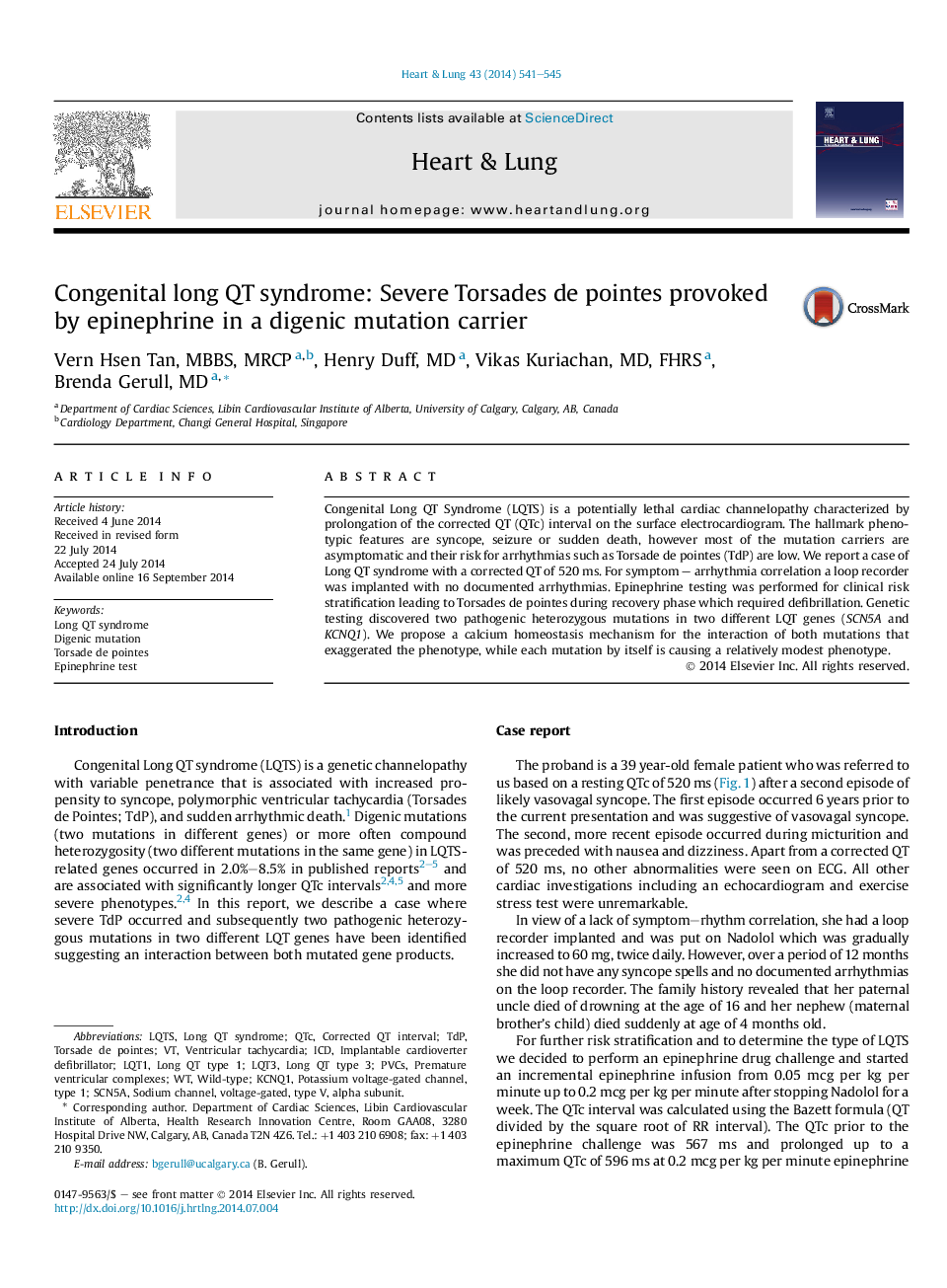| Article ID | Journal | Published Year | Pages | File Type |
|---|---|---|---|---|
| 2650440 | Heart & Lung: The Journal of Acute and Critical Care | 2014 | 5 Pages |
Congenital Long QT Syndrome (LQTS) is a potentially lethal cardiac channelopathy characterized by prolongation of the corrected QT (QTc) interval on the surface electrocardiogram. The hallmark phenotypic features are syncope, seizure or sudden death, however most of the mutation carriers are asymptomatic and their risk for arrhythmias such as Torsade de pointes (TdP) are low. We report a case of Long QT syndrome with a corrected QT of 520 ms. For symptom – arrhythmia correlation a loop recorder was implanted with no documented arrhythmias. Epinephrine testing was performed for clinical risk stratification leading to Torsades de pointes during recovery phase which required defibrillation. Genetic testing discovered two pathogenic heterozygous mutations in two different LQT genes (SCN5A and KCNQ1). We propose a calcium homeostasis mechanism for the interaction of both mutations that exaggerated the phenotype, while each mutation by itself is causing a relatively modest phenotype.
